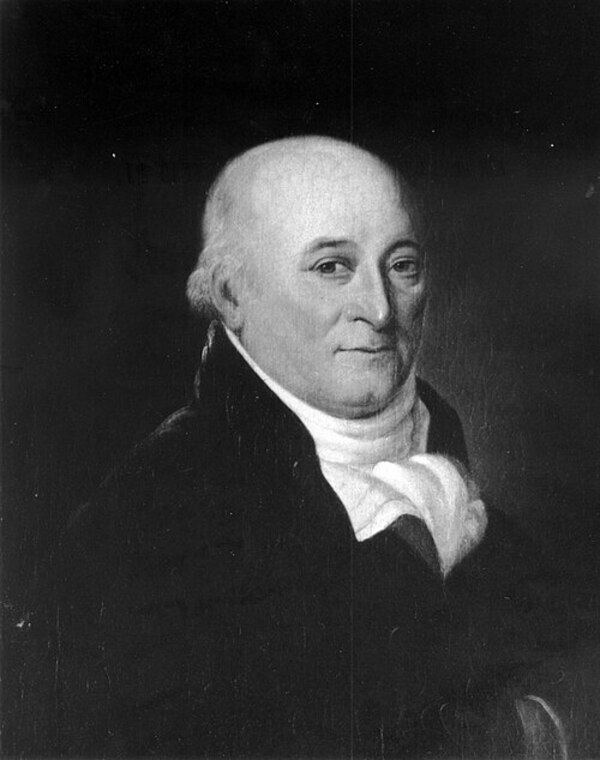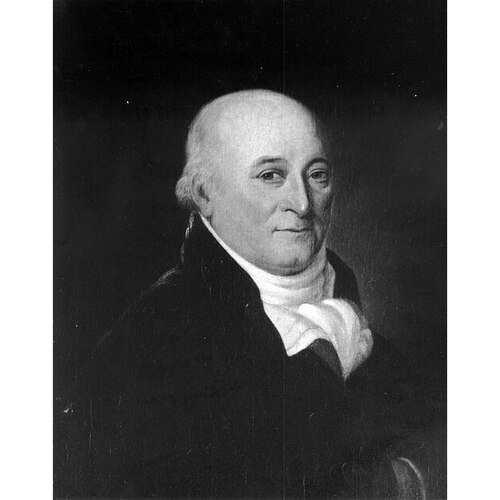
Source: Link
CERRÉ (Séré, Serré), JEAN-GABRIEL, merchant; b. 12 Aug. 1734 in Montreal (Que.), son of Joseph Serré and Marie-Madeleine Picard; m. 24 Jan. 1764 Catherine Giard, daughter of Antoine Giard*, in Kaskaskia (Ill.), and they had four children; d. 4 April 1805 in St Louis (Mo.).
By the mid 1750s Jean-Gabriel Cerré was in the Illinois country as a merchant. He established himself at Kaskaskia but apparently retained close personal and commercial ties with his birthplace. His eldest daughter married Montreal notary Pierre-Louis Panet, and Cerré made periodic visits to the city throughout his career. He shipped goods from there to Illinois in 1767, 1775, and 1777 and, since the regions had close economic links, probably in other years as well. He dealt in the usual trade goods, including guns and ammunition, cloth, tobacco, and metal objects. It would appear that he was not just a storeman; he spent the winter of 1776–77, for instance, among the Mascoutens and Kickapoos.
Cerré became a leading merchant and member of the Illinois community in a turbulent era of its history. His behaviour during the many régimes through which he lived suggests that he believed strongly in the importance of obeying established authority. In the years from 1764 to 1778, when the British ruled the area, he seems to have conducted himself correctly. Even in 1777 and 1778, when British control was being undermined by American agents, he upheld the authority of the administrator, Philippe-François Rastel de Rocheblave. It has been suggested that Cerré’s loyalty was encouraged by the threat posed to his business by American competitors who were invading Illinois. Whatever the case, after George Rogers Clark seized the region for Virginia in the summer of 1778 Cerré recognized the fait accompli and vowed to be a “good and submissive subject.” On the promise of future repayment he used his credit to buy supplies for Clark’s men, and he rented his forge to the Americans as well.
Virginia established civil government for the conquered territory in December 1778, and the following May Cerré allowed himself to be elected justice of the peace for Kaskaskia and district. By the terms of their commission he and the other jps could also sit as judges of a county court with jurisdiction in civil and criminal cases. The law which they were to interpret was basically French with some modifications from Virginia practice. Cerré was not a legal expert; concerning his later description to Congress of the judicial system under the French and British régimes, historian Clarence Walworth Alvord has stated that he showed “a surprising ignorance” of the subject. He appears, however, to have been an honest man whose opinions were respected in the community.
The French inhabitants of Illinois had hoped that the establishment of courts would protect them from the free-for-all that was developing under the occupation by American frontiersmen. As soon as jps were commissioned they submitted a petition complaining of depredations by the troops, land grabbing by speculators, and the unrestricted sale of liquor to Indians and black slaves. The government was unable to impose order, however, and the inhabitants grew less willing to make sacrifices for its support. By the autumn of 1779 the Americans were employing coercion to get supplies. The result was an emigration, particularly by the more prosperous residents, across the Mississippi to Spanish territory. Cerré had accumulated considerable property on the west bank around St Louis and Ste Geneviève by the 1770s, and in late 1779 or early 1780 he moved to St Louis.
Under Spain’s rule his business flourished and he was soon the wealthiest man in the vicinity. His daughter Marie-Thérèse married Auguste Chouteau in 1786, a union that brought together the community’s two leading merchant families. His son Paschal was later employed by the Americans as a secretary and interpreter to Indian treaty commissions. Cerré received several land grants from the Spanish authorities. He had a house in town, a country property, and a stock farm; in 1791 he owned 43 slaves – far more than anyone else in St Louis. A grant in 1800 referred to him as “one of the most ancient inhabitants of this country, whose known conduct and personal merit are recommendable.” His acquaintance with change had not ended, however. During the next few years Spanish Louisiana was ceded to France and then purchased by the United States. Thus by the time of his death in 1805 Jean-Gabriel Cerré had experienced no fewer than six régimes; despite these upheavals he had managed to become one of the most prosperous merchants in the Mississippi valley.
Mo. Hist. Soc. (St Louis), J.-G. Cerré papers; see also references to Cerré
Cite This Article
Donald Chaput, “CERRÉ (Séré, Serré), JEAN-GABRIEL,” in Dictionary of Canadian Biography, vol. 5, University of Toronto/Université Laval, 2003–, accessed January 10, 2026, https://www.biographi.ca/en/bio/cerre_jean_gabriel_5E.html.
The citation above shows the format for footnotes and endnotes according to the Chicago manual of style (16th edition). Information to be used in other citation formats:
| Permalink: | https://www.biographi.ca/en/bio/cerre_jean_gabriel_5E.html |
| Author of Article: | Donald Chaput |
| Title of Article: | CERRÉ (Séré, Serré), JEAN-GABRIEL |
| Publication Name: | Dictionary of Canadian Biography, vol. 5 |
| Publisher: | University of Toronto/Université Laval |
| Year of publication: | 1983 |
| Year of revision: | 1983 |
| Access Date: | January 10, 2026 |



